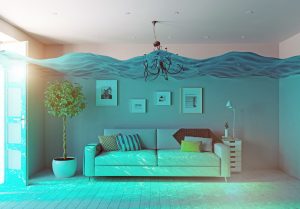What is a Sump Pump, and Why Do I Need One?

There’s nothing more relaxing than the sound of a gentle thunderstorm. The thunder rumbles and rain falls softly on your windows. But peaceful sounds can induce panic when water starts to seep into your basement.
But, what do you do if your basement starts taking on water? A properly installed sump pump will keep your basement dry and your home healthy.
Keep reading to learn everything you need to know about sump pumps and why you may need one.
What Is a Sump Pump?
A sump pump is a pump that sits in the lowest part of your basement. Sometimes a basement will have a dedicated space, or a hole, specifically for the pump. The hole will sit lower than the rest of the basement.
The pump will have a float attached to a switch. When the sump pump hole begins to fill with water, then the float will trigger the switch which then begins to pump water out of the basement through a hose attached to the pump.
Often the hose on the sump pump will go outside to a dedicated space be it the street or the backyard farther away from the home.
If you live in an area prone to flooding, a sump pump makes sense. You can attempt to install the sump pump on your own or call in an expert in sump pump installation.
Perks of a Sump Pump
A sump pump will help with many aspects of plumbing in your home. It keeps your basement from flooding by pump water out of the basement before it reaches the basement floor.
Because the sump pump keeps the water levels low beneath your basement, it removes unnecessary moisture. It will reduce the humidity level in your home, protecting it from mildew and mold. This in turn keeps your family healthy as you avoid annoying mold illnesses.
Furthermore, having a sump pump means your home is prepared for water. It is a safeguard similar to having a home security system. Ultimately, putting a safeguard like a sump pump in will increase your property value.
Pump Varieties
As you begin your search for a sump pump, you’ll quickly discover that you have two choices. You can purchase a pedestal pump or a submersible pump.
When you have a sump pump installed, a contractor will have to dig the sump pump hole, otherwise known as a sump pit or a basin. They will dig this hole in the lowest part of your basement and then line the hole with gravel.
Submersible Pumps
The submersible pump is submerged in the water in your sump pit. It has its motor and housing inside the hole. As water fills your hole, the submersible pump will kick on and begin to pump water from the hole through its hose and out of your home.
Pedestal Pumps
With a pedestal pump, the pump is in the sump pit, but the motor for the pump is on a pedestal above the sump pit. So when the foot begains to rise, it will flip the float switch, and the motor will kick in and pump water from the hole.
A pedestal pump works well if you do not have much water to pump out and if you do not mind the noise. If you spend a lot of time in your basement or if you have a lot of water to pump out regularly, a submersible pump makes more sense since they are quieter and more powerful than a pedestal pump.
When Your Pump Fails
It’s important to note that pumps typically run off electricity. Therefore, if your power goes out during a storm, your pump will not be able to pump water from your basement. In this case, it’s helpful to have a generator so you can keep your basement dry.
It’s also helpful to have an emergency backup pump. You can purchase a pump that runs on water power or has a battery backup in case your power goes out for a short period of time.
At the time, the expense of a backup might seem unnecessary. But when you have a heavy rain threatening to cause water damage to your home, the backup will make sense.
Do I Need a Sump Pump?
You don’t need a sump pump until you need one. So even if you live in a fairly dry area, when you have water coming into your basement, it’s too late to get the pump that will save the basement.
Sump pumps can remove water from your basement and also pump ground water away from a basement. Because sump pumps eliminate standing water, they also prevent mold from rowing in your basement.
A good sump pump also contributes to fire prevention. When your basement begins to flood, electrical circuits can short out and cause a electrical fire. Keeping the water away prevents this disaster.
Sump Pump Maintenance
Once you have a sump pump installed, you need to maintain the pump to make sure it works when you need it.
First and foremost, test your pump regularly. If your pump isn’t running regularly, you can test it by pouring a five-gallon bucket of water slowly into the sump basin. Make sure the water triggers your pressure or float switch. The pump should drain the sump pit.
If the pump does not turn on, it’s time to get a new pump.
Double check where your sump pump drains as well. Often cities will put a ban on draining sump pumps into the municipal water system. Doing so can overwhelm the sewer system when you are in the midst of a heavy rain.
Have your sump pump and plumbing serviced regularly as well. Preventative maintenance will detect faulty wiring, broken pipes, and debris in the pump.
Pump and Save
A sump pump can save your home from a sewage and water disaster. When you’re in the middle of a flooded area, sump pumps are a high currency, and people are willing to trade just about anything for them. They’re often hard to find.
So make sure you have a working sump pump installed in your basement. You can avert a disaster.
Do you have water problems in your basement? If so, we can help. We offer quality services that will waterproof your basement.
We work hard to custom design a solution for each home that we service, knowing there are several methods to encapsulate crawl spaces and waterproof basements. You can trust us with your home.
Contact us today for a waterproofing solution. We would love to help keep your and your home dry.
Recent Posts
- How Crawl Space Encapsulation Benefits the Environment – An Expert Guide
- 6 Ways Professionals Keep Your Crawl Space in Top Shape
- Structural Repair Solutions for Crawl Spaces, Basements, and Foundations
- Essential Crawl Space Repair Tips Every Homeowner Should Know
- The Importance of Radon Mitigation: Ensuring a Safe Living Environment for Homeowners
Categories
- Basement Mold
- Basement Waterproof Foundation
- Basement Waterproofing
- Crawl Space Dehumidifier
- Crawl Space Encapsulation Cost
- Crawl Space Repair
- Crawl Space Waterproofing
- Encapsulation
- Foundation Repair
- Foundation Waterproofing
- French Drains
- Leaky Basement
- Mold Remediation
- Mold Removal
- Radon
- Slab Jacking
- Sump Pump
- Uncategorized
- Vapor Barrier
- Water Leak
- Waterproofing
- White Mold
Archives
- June 2024
- May 2024
- March 2024
- January 2024
- June 2023
- May 2023
- April 2023
- March 2023
- February 2023
- January 2023
- December 2022
- November 2022
- October 2022
- September 2022
- August 2022
- July 2022
- June 2022
- May 2022
- March 2022
- February 2022
- January 2022
- December 2021
- November 2021
- October 2021
- September 2021
- August 2021
- July 2021
- June 2021
- May 2021
- April 2021
- March 2021
- February 2021
- January 2021
- December 2020
- November 2020
- October 2020
- September 2020
- August 2020
- July 2020
- June 2020
- May 2020
- April 2020
- March 2020
- February 2020
- January 2020
- December 2019
- November 2019
- October 2019
- September 2019
- August 2019
- July 2019
- June 2019
- May 2019

